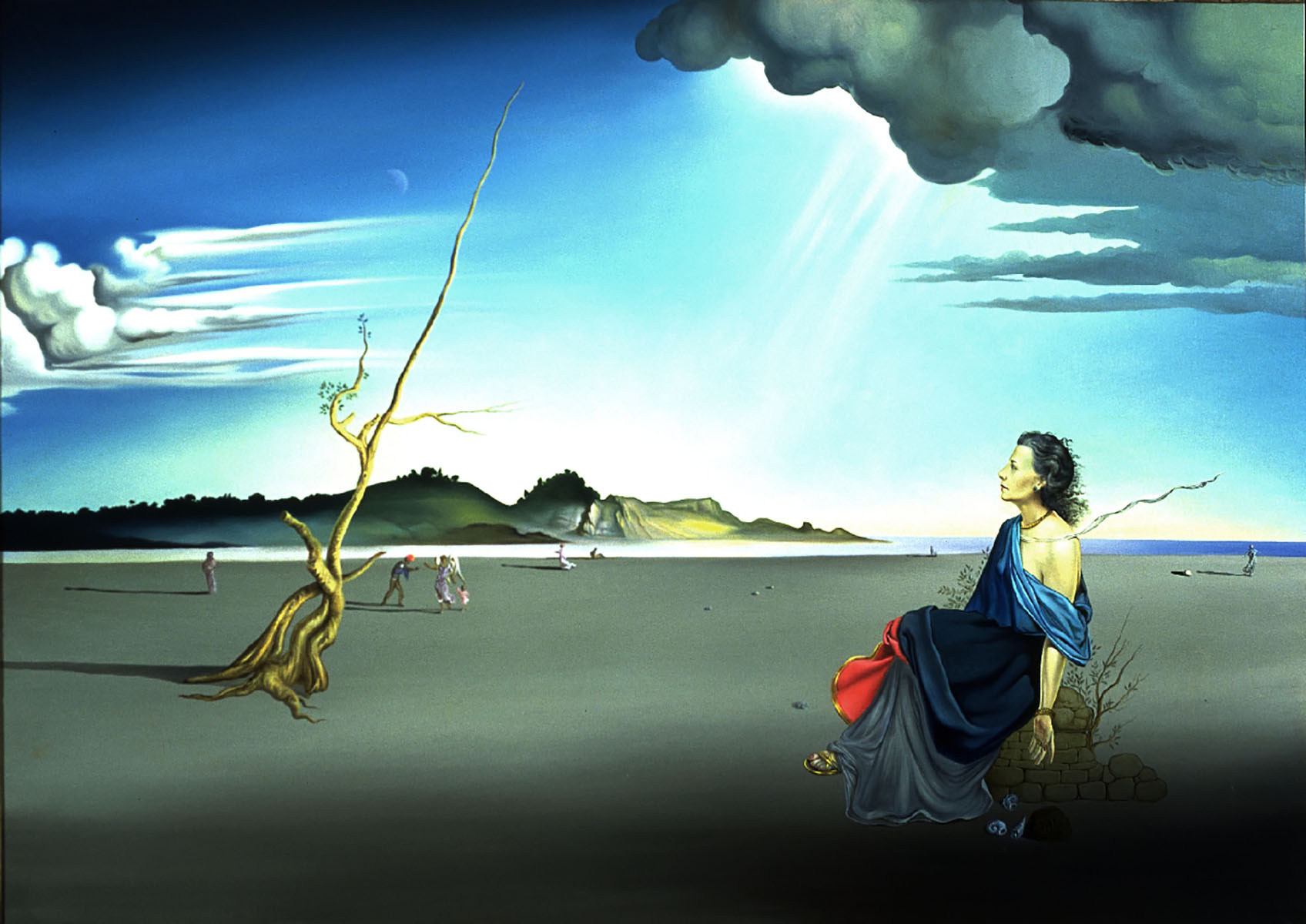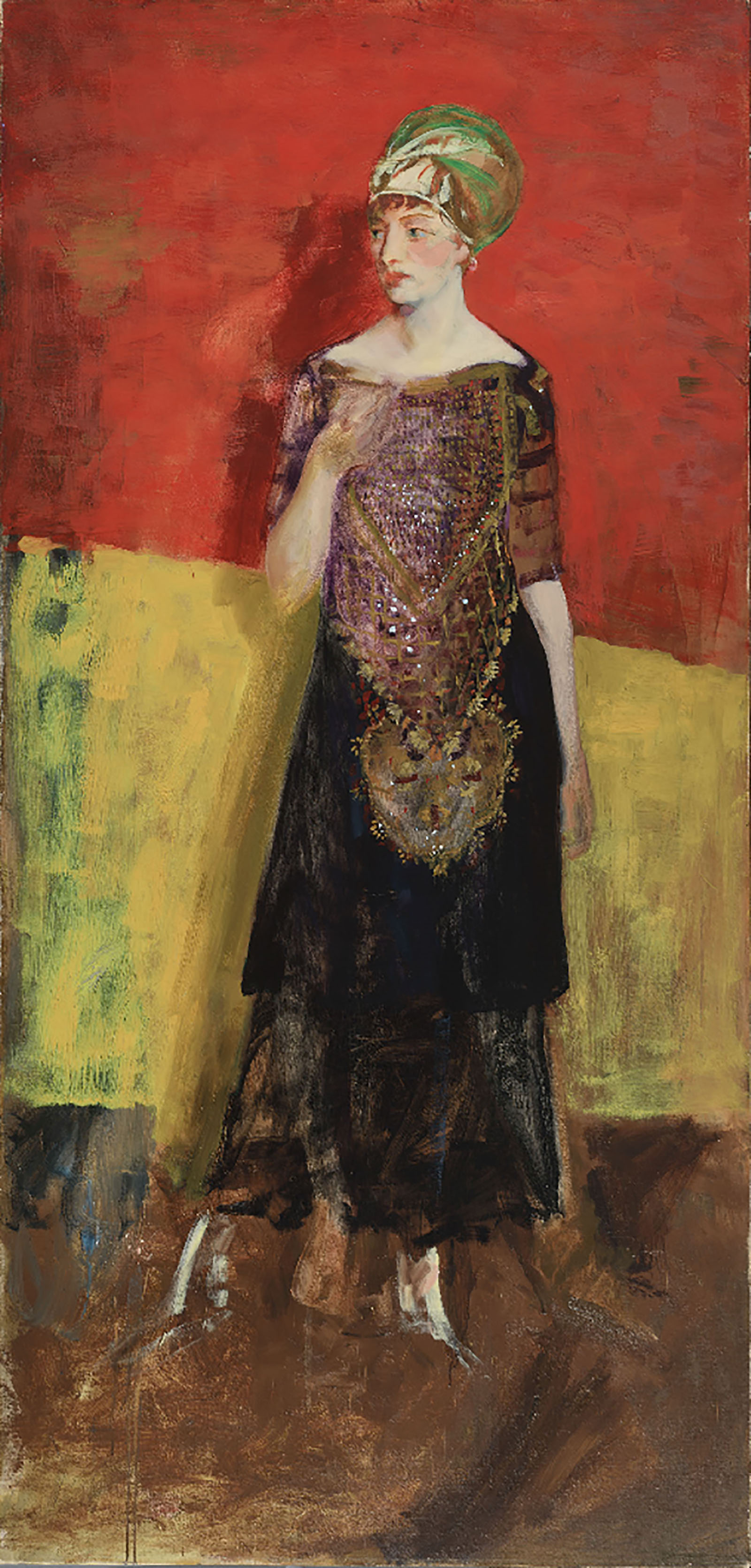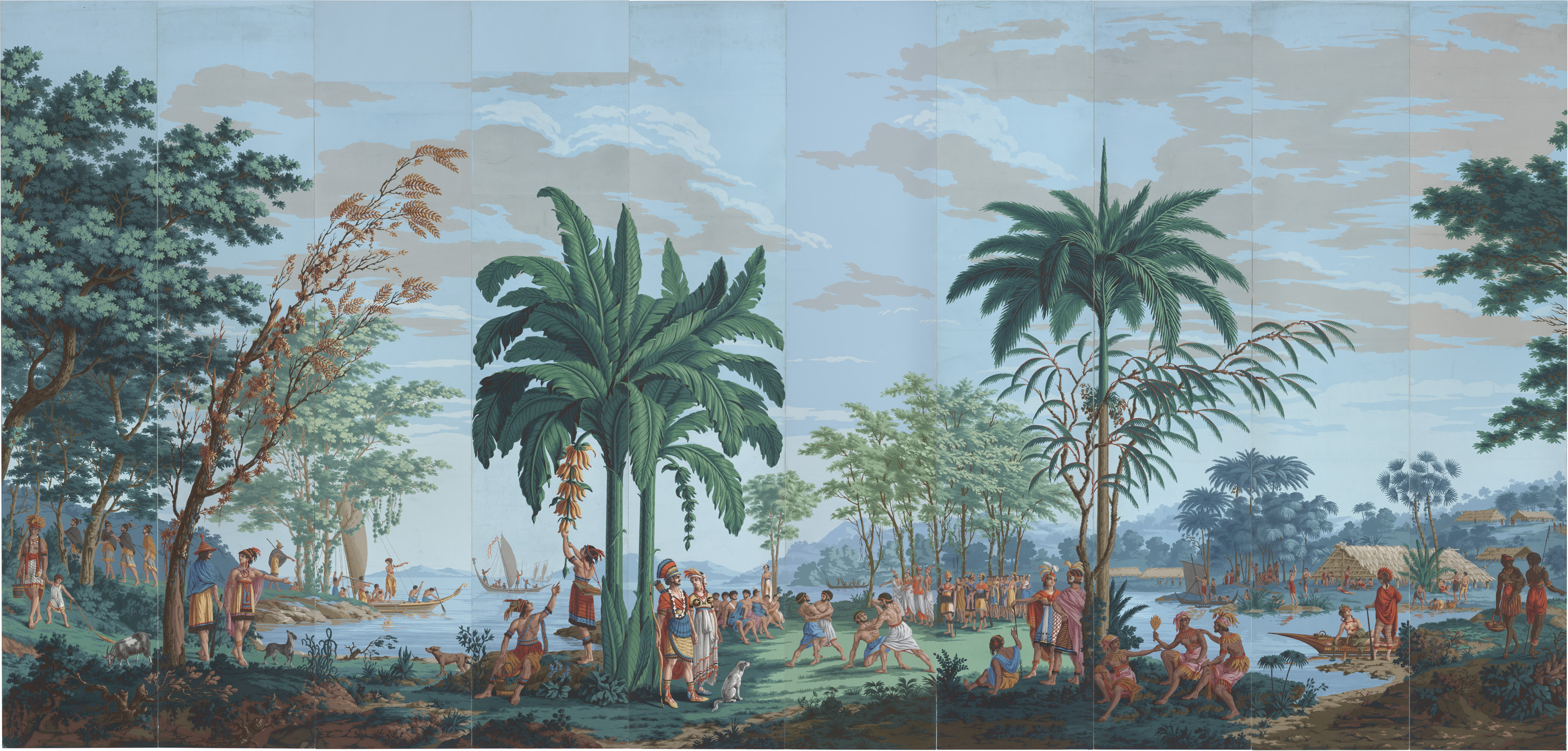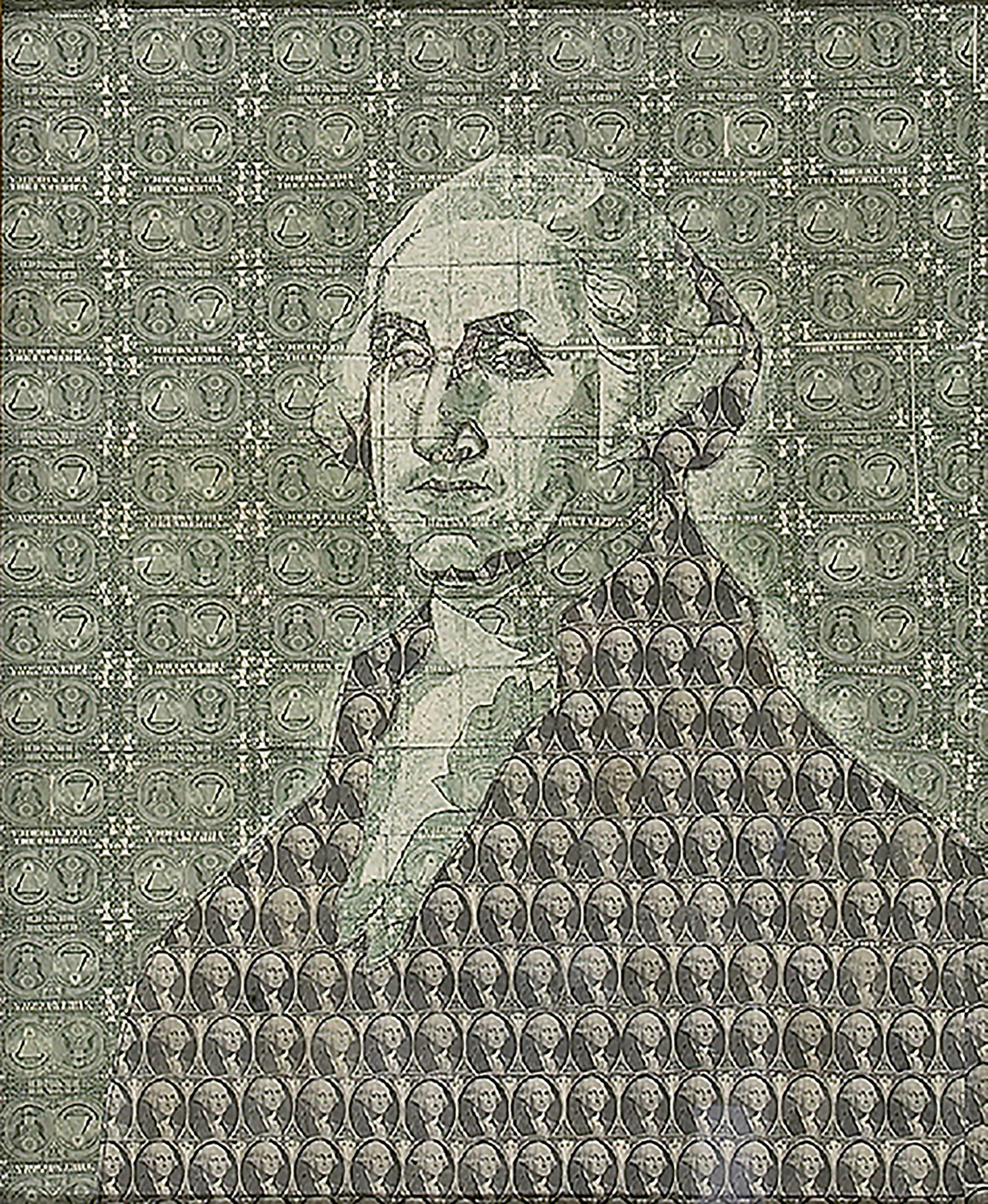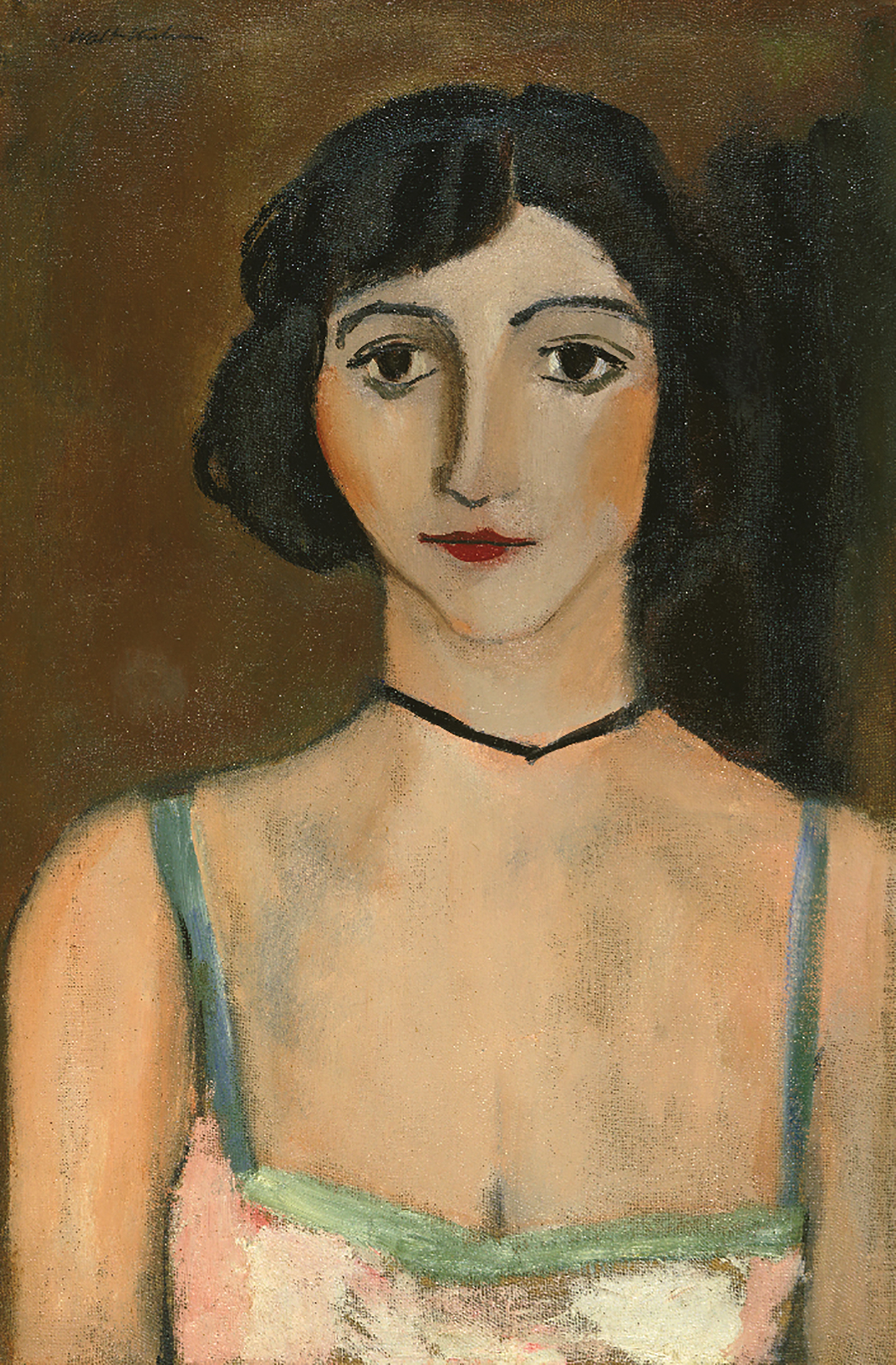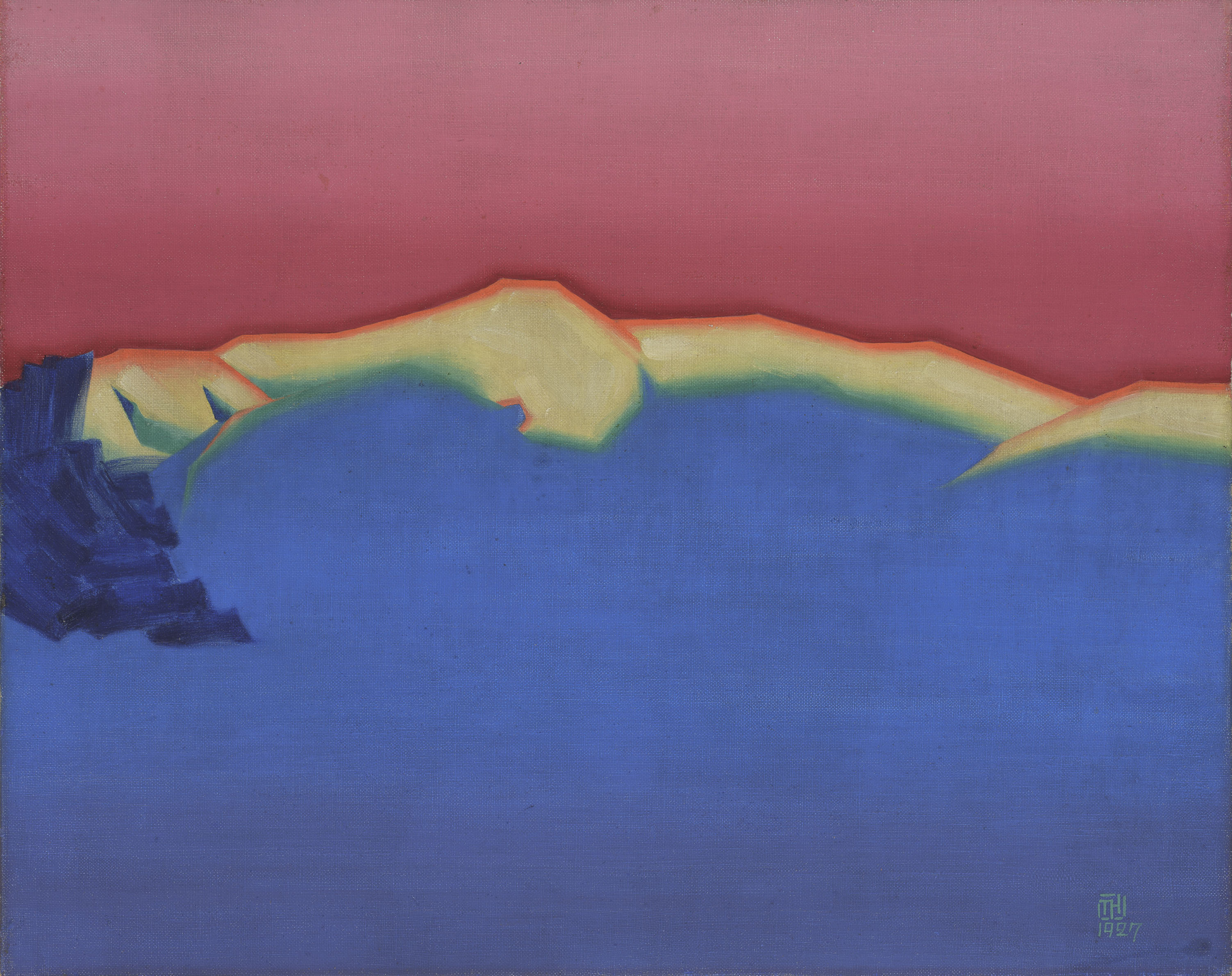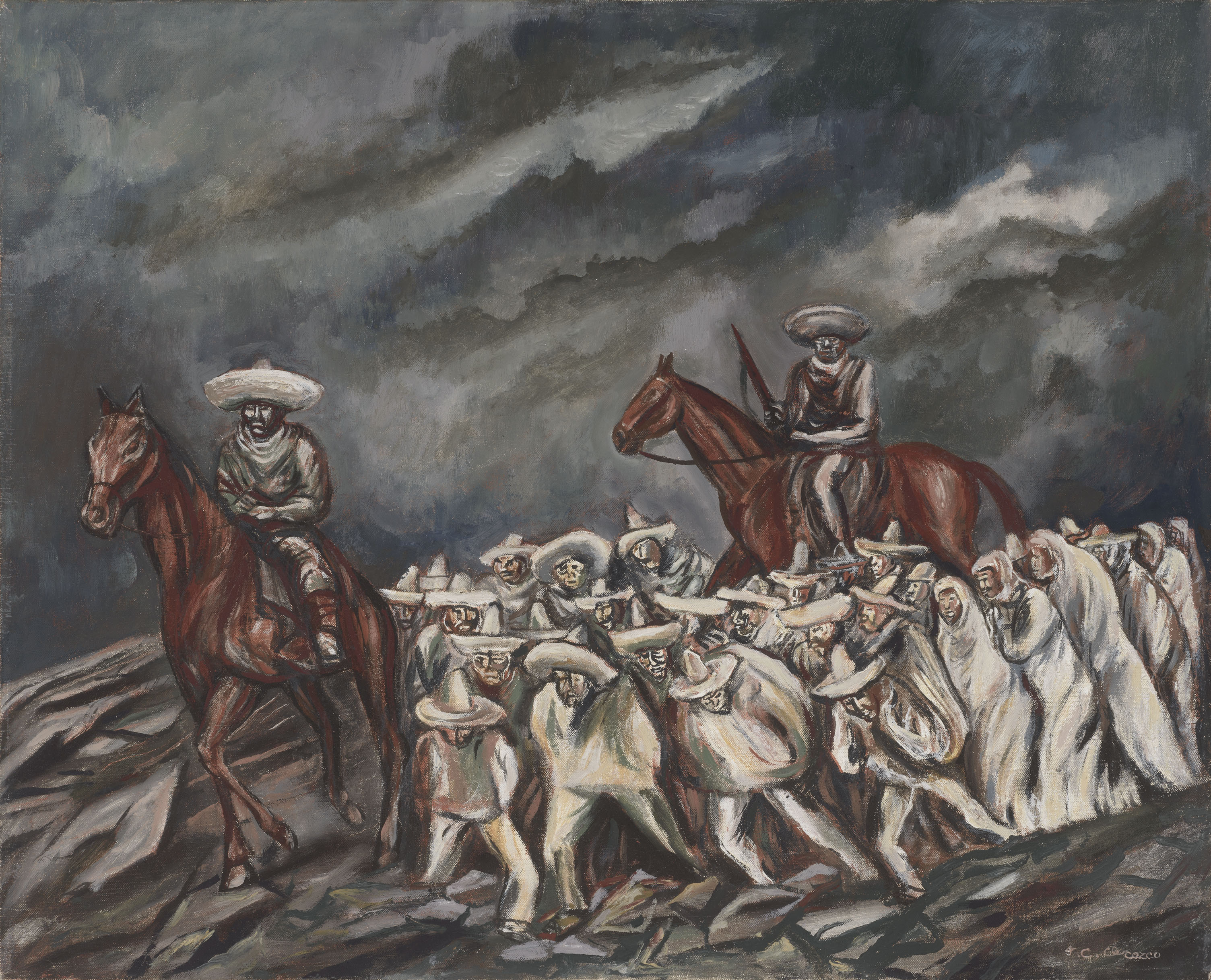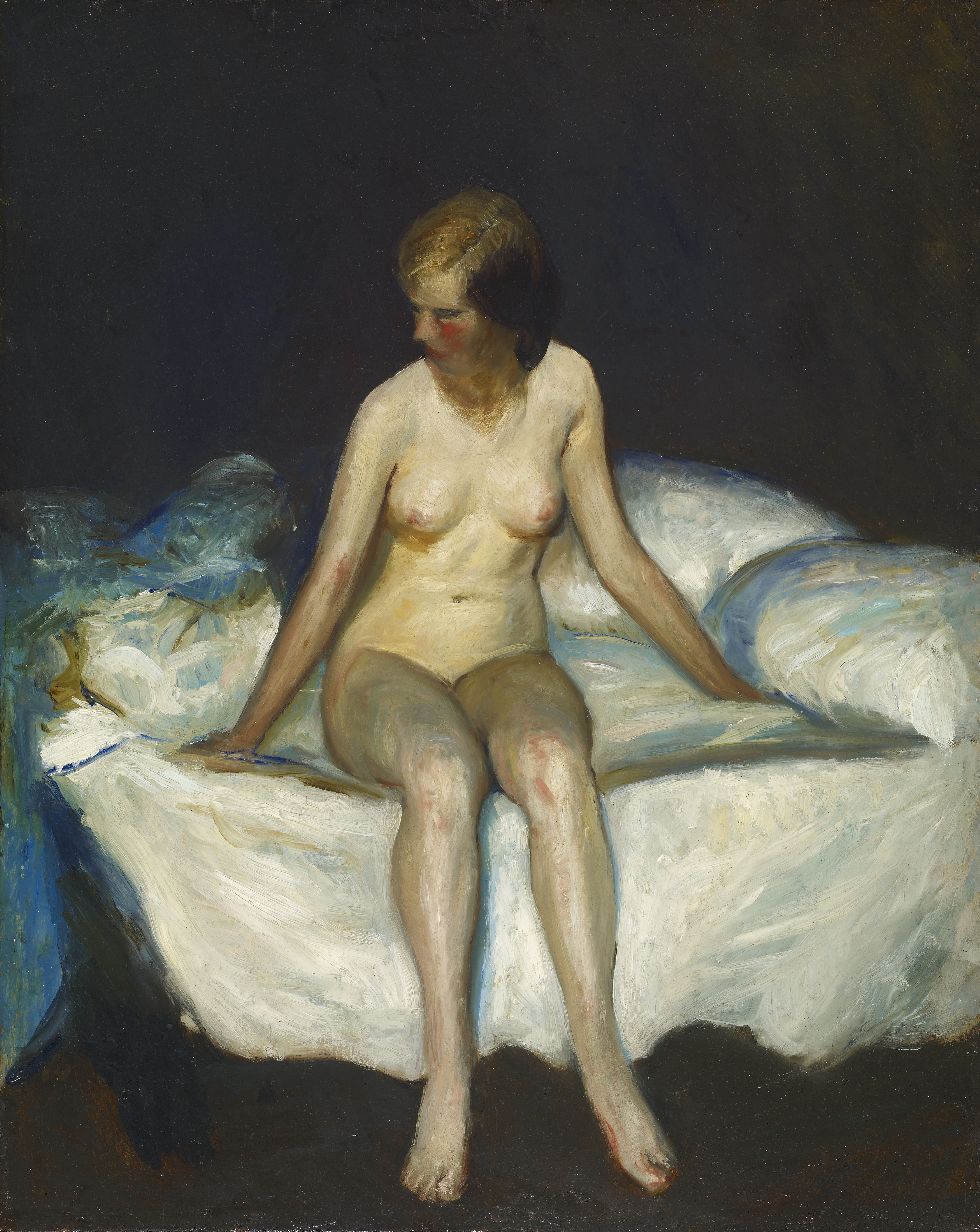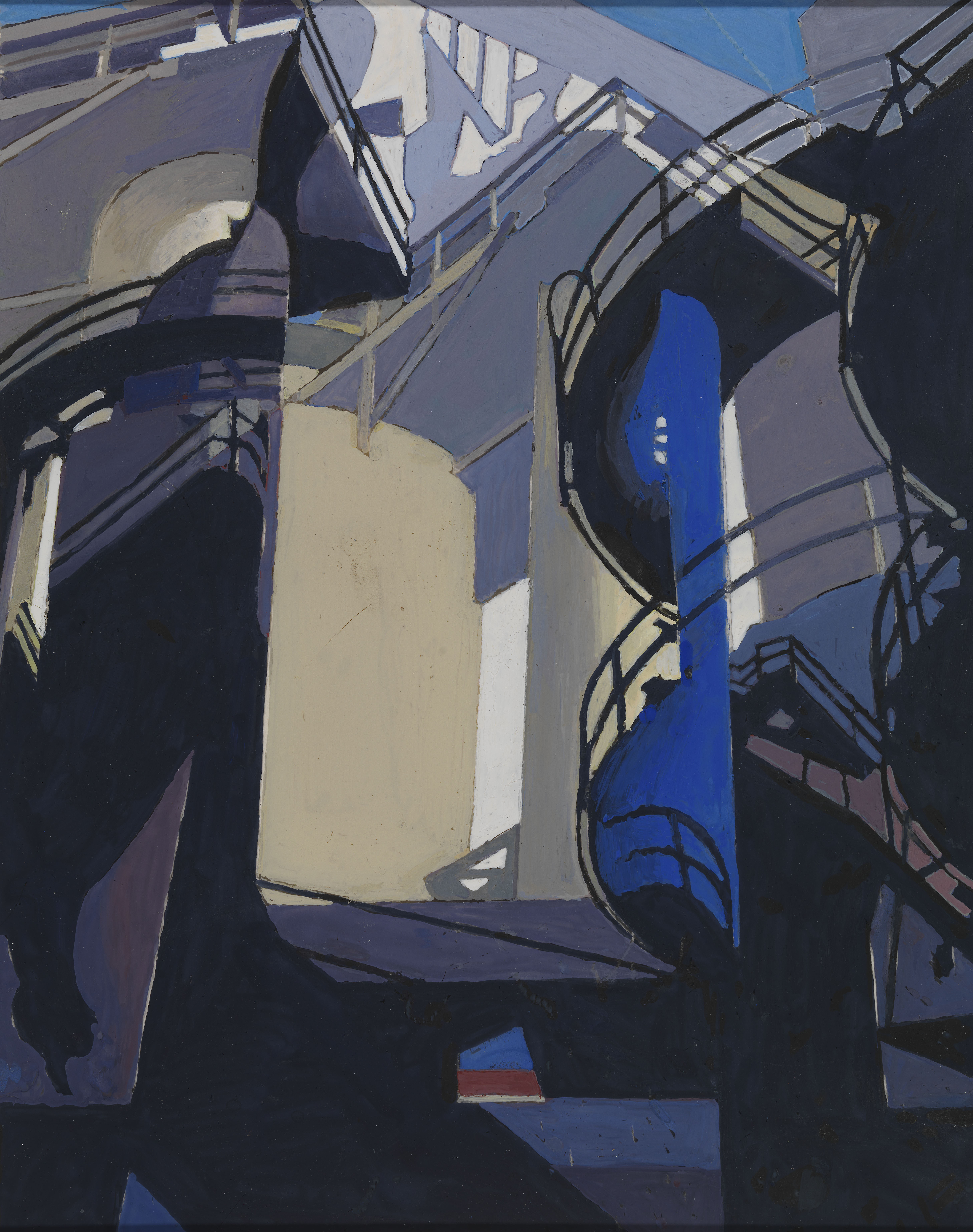Portrait of Dorothy Spreckels Munn
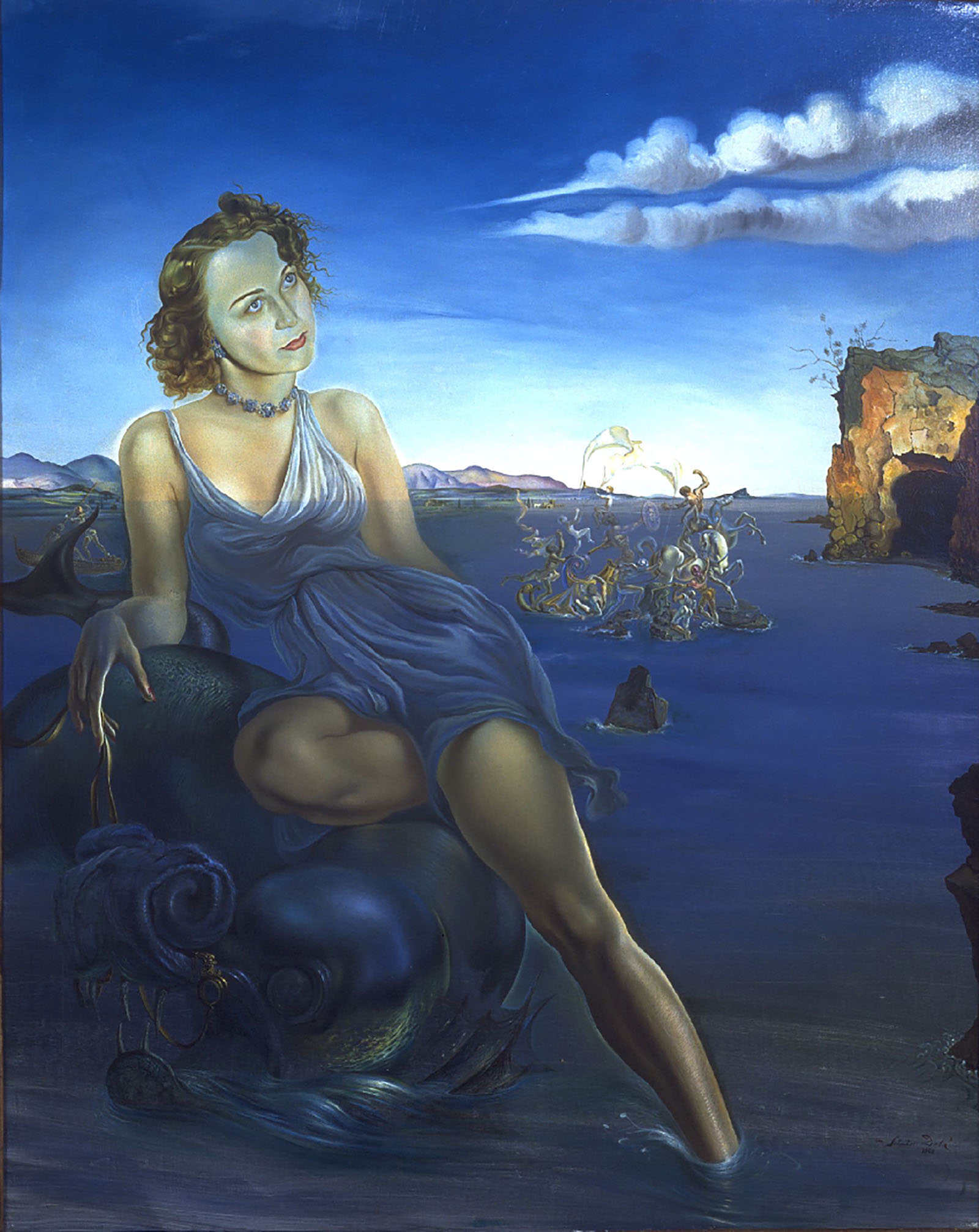
What is the relationship of dreams and reality?
Dorothy Spreckels Munn was a daughter of Alma and Adolph Spreckels, founders of the Legion of Honor. Here she is portrayed as a sea nymph, reminiscent of Renaissance depictions of Galatea. While working on this portrait, Dalí and his wife, Gala, lived with Munn for over a month; she sat for him multiple times, sometimes for hours, as he sketched her in various postures. Ultimately, Dalí abandoned these studies and rendered her in a pose developed, like the background, purely from imagination.
